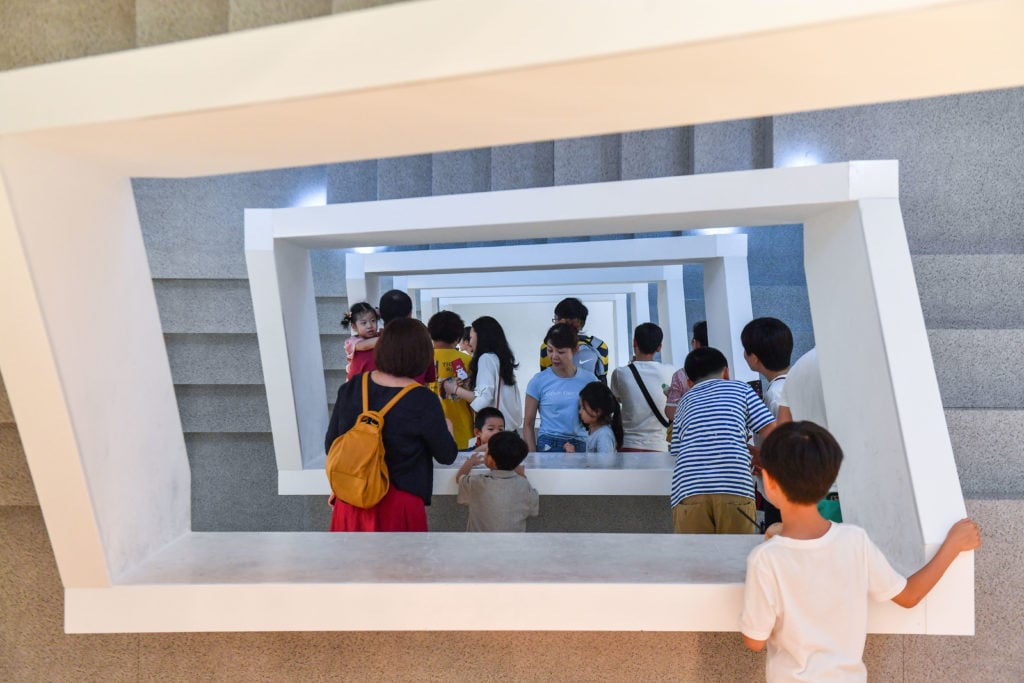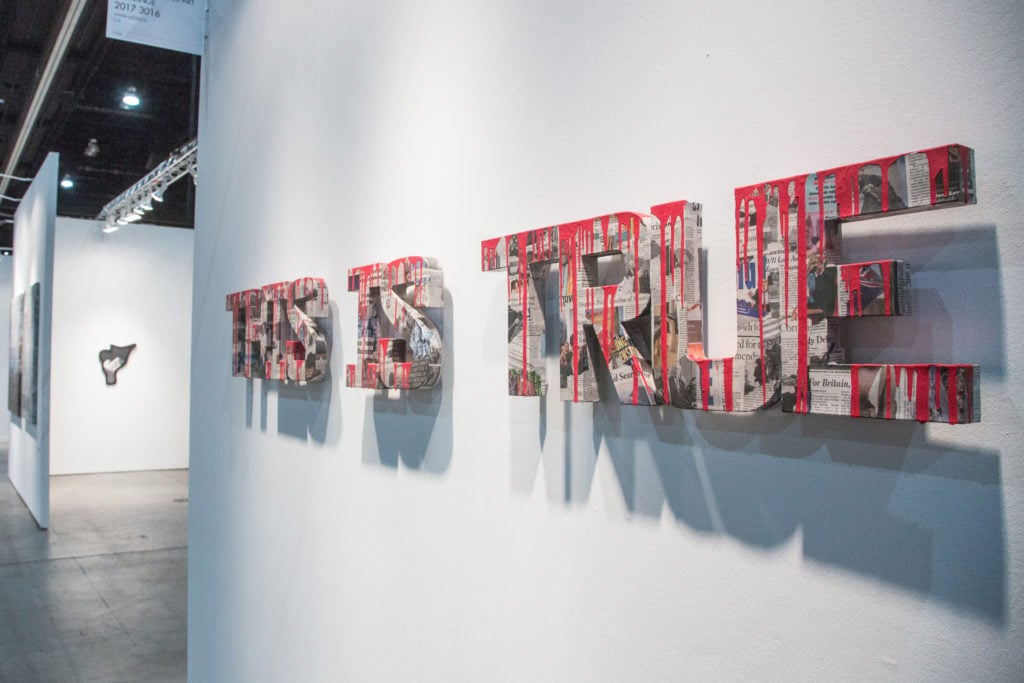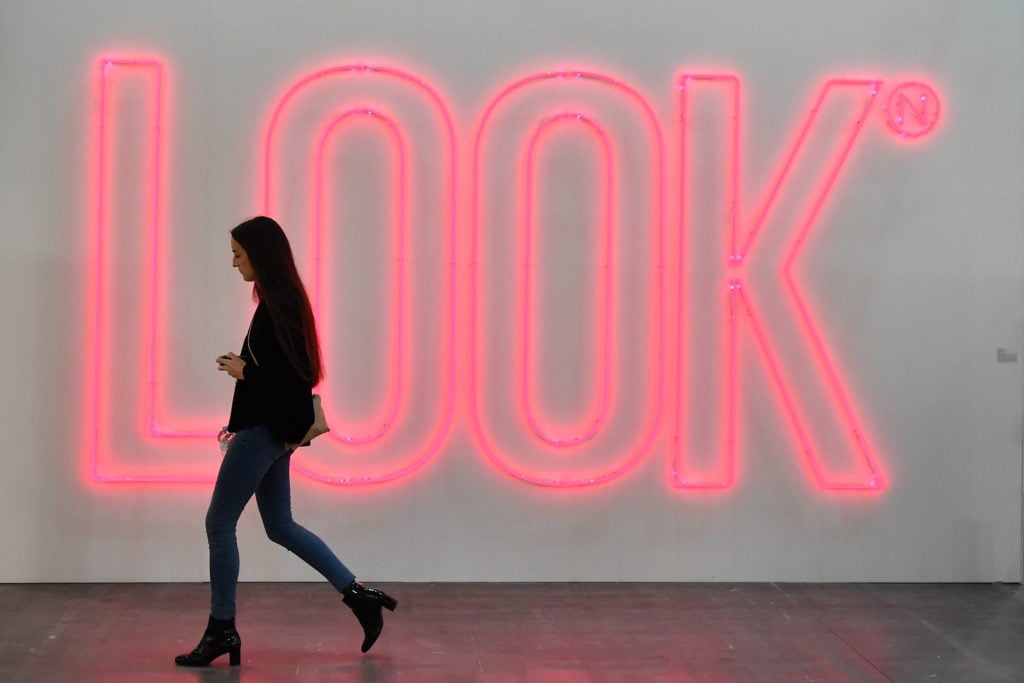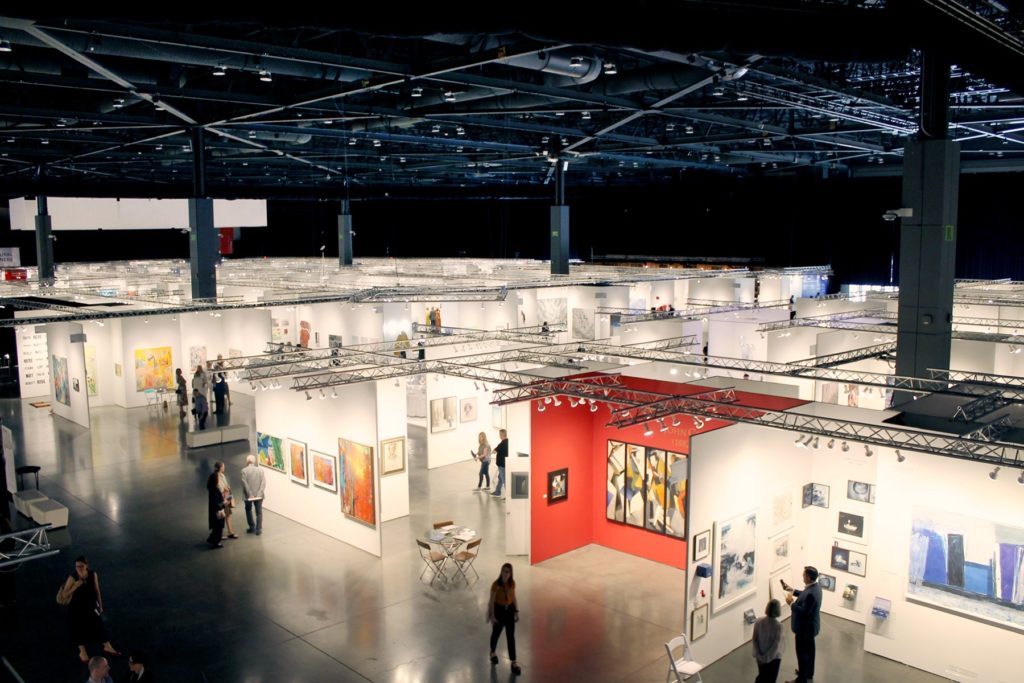Opinion
Context Collapse Is Threatening the Future of Big Art Fairs. Here’s Why We Should Be Very Concerned
In the first of a two-part series, Independent founder Elizabeth Dee considers the biggest problem facing art fairs today.

In the first of a two-part series, Independent founder Elizabeth Dee considers the biggest problem facing art fairs today.

There are too many art fairs. The proliferation of fairs over the past 15 years—from 68 in 2005 to more than 220 by 2015, according to one estimate—has resulted in an overcrowded system. Nearly every week of the year, multiple fairs open around the world, from experimental and intimate events to mass-market trade shows that are far more expansive than the market can support. At their largest, fairs can assemble more than 250 galleries and work by as many as 5,000 artists under one roof for just around four days.
Unsurprisingly, this can feel overwhelming to the fair’s primary audience: collectors. Yet for participating galleries, the challenge remains the same: to build relationships and create value for developing artists. So lately, we find ourselves in the unsustainable situation in which the goals of the galleries that support the fairs, and the collectors that support the galleries, are at odds with those of the fairs themselves. The issues that result from this art-fair supersizing are complex, but they can be unified under one term: “context collapse.”
“Context collapse” is a term coined by the academic Michael Wesch in his 2008 lecture, “An Anthropological Introduction to YouTube.” He spoke of “content collapse” and “narrative deficiency” as phenomena that characterize social media, where users have multiple distinct communities—friends, family members, colleagues—collated into a single audience. The differences between traditional face-to-face relationship-based interaction and the potentially infinite audience of social media—or, we might logically extrapolate, businesses that scale in a parallel manner, such as big art fairs—is an issue that these industries are beginning to face.
It wasn’t always this way. For the last half century or more, galleries played a key role in creating contexts for contemporary art outside of the artist’s studio. The default sites for first encounters with new art have been solo exhibitions of works directly from the studio. The context for the reception of an artist’s work, especially the work of an artist at the beginning of a career, was formed in large part by the gallery.

At fairs, even solo shows become group shows. (Photo by Gabriel Olsen/Getty Images)
Now, at large fairs when so many of us are introduced to unfamiliar artists, or unfamiliar bodies of work by artists we know, that context has, to a large degree, imploded. As a result, art encounters change significantly because they lack the context that comes from seeing art alongside various other works from an artist’s studio that evince a sustained investigation or practice over time, or works by several artists that share common ideas and interests, and feed each other’s art. Such associations help to connect the dots, to enable us to better understand any given work’s relevance.
The impact of this shift—from seeing works of art in a thoughtful context to seeing individual works by multiple artists in a group context en masse—cannot be underestimated.
The sense of being overwhelmed and confused by the fair experience has become a regular complaint of collectors, and for good reason. Collectors now find it is challenging to identify value and opportunity at a big fair, to clarify a consensus around new artists and ideas, to discover artists they don’t yet know, to understand the conditions of their markets, and to forge new relationships.
Yet collectors still prefer the efficiency of visiting fairs rather than galleries. But even this benefit has its challenges: collectors can only see so much art, especially at a moment when we hear from them that the time they spend on site is decreasing. If a fair has more than 100 galleries, we cannot expect collectors to see a respectable fraction in the space of a few hours.
Given that fairs are businesses for which a big brands and big profits are prized, why should they care about any of this? They have seen record growth in the last decade. We might logically ask, if fairs are making money (and the largest ones most likely are), why would they have an interest in changing?
The consequences of context collapse make it imperative for fairs to pay attention and prevent it.
The dearth of context-rich fairs—places of both efficiency and authentic discovery—is having an impact, year-to-year, on how many new collectors come into the art world—and how many existing collectors broaden their engagement.
We are now beginning to see galleries become more selective on fair participation because of a perceived reduced opportunity to access serious collectors at some of these events. Subsequently, galleries participating in large fairs are faced with a narrower selection of work they can comfortably bring, knowing that sales to their existing clients will have to cover their costs. And that means certain artists get seen by default, and certain markets rise, while others stagnate.

Something that is hard to do at fairs. Photo by Valerio Pennicino/Getty Images.
Most galleries go to big fairs to sell works of art now, not to sell artists—which is an issue. That’s why it is rare to see solo booths in a main section at a big fair: these contexts are often more about showing works that might be the right size for a particular wall.
The reason fairs should care about context collapse is because galleries won’t be able to support artists’ development by selling one or two pieces at a fair alone. Artists will end up, and have ended up, creating objects for fairs—not for galleries, not for museums, not for people’s homes, but for fairs.
With this comes many problems. An uneven quality of art can lead to uneven sales. There is a loss of trust on the part of galleries who were loyal to certain branded fairs for years, but now have to choose between transactional value and associative value. There is a dwindling set of financial resources for sustainable growth, a loss of footfall from new collectors who feel confused by the big trade shows, and a loss of footfall from experienced collectors who are offered everything via PDF without even having to attend.
Fairs may be making money for now, but they are not developing a sustainable marketplace for art long-term. Galleries are not, on the whole, enjoying big fair experiences, nor are collectors. Therefore, it is essential for fairs to fight against this issue of context collapse—from there, new innovations have the potential to take hold and develop.

The largest fairs are nearly impossible to see in one visit. Image Rain Embuscado.
As a result of this context collapse, we’re losing something important: authentic art experiences, and the critical ability to sustain and support artists. As the art fairs pursue a natural survival tactic for business—scale—the galleries are losing out.
I think about these issues daily. As a co-founder and owner of Independent, a fair with no more than 60 galleries in any given edition, with solo and duo presentations as the norm, I bring my own research to this conversation. Independent’s smaller size enables it to formulate a new context each year, facilitating unexpected encounters for collectors and helping sustain both galleries and artists.
In an effort to improve our field, I’d like to take a look at what is working at fairs that are seeking to create constructive contexts for their stakeholders. In the second installment of this two-part series, I will propose concrete steps fairs can take to help build a more sustainable future.
Elizabeth Dee is the co-founder of Independent New York. Recent publications include Every Future Has a Price: 30 Years After Infotainment, an exhibition publication in collaboration with Distributed Art Publishers (D.A.P.).